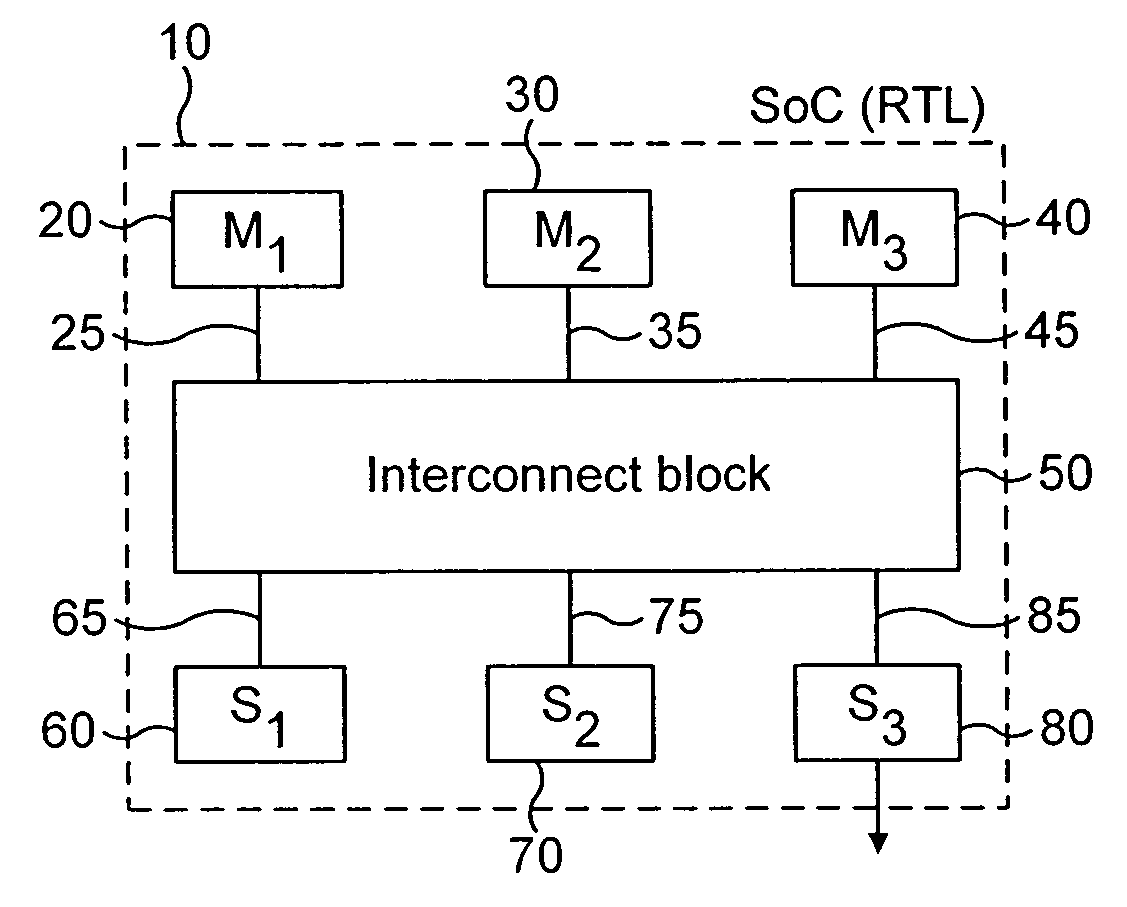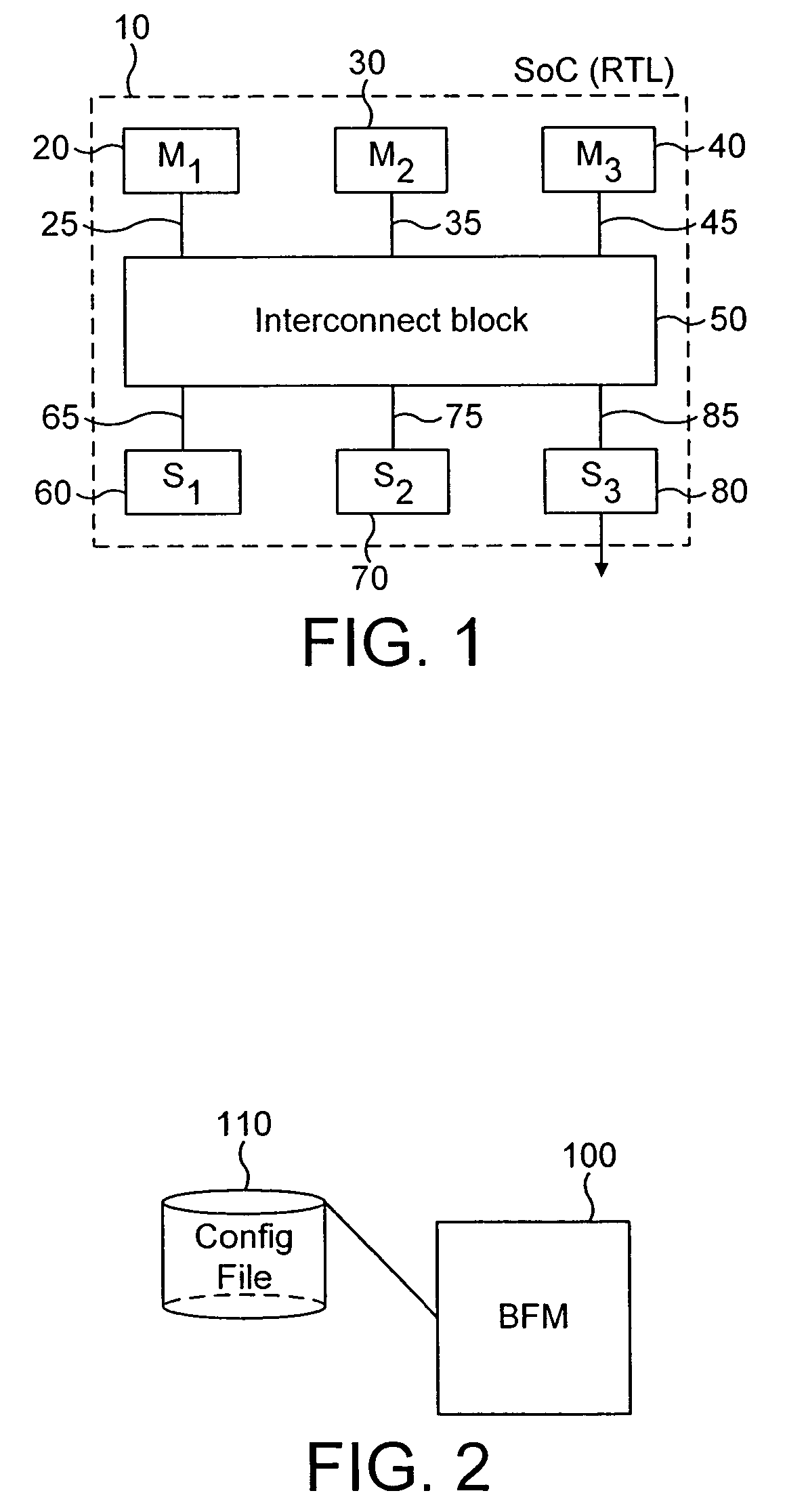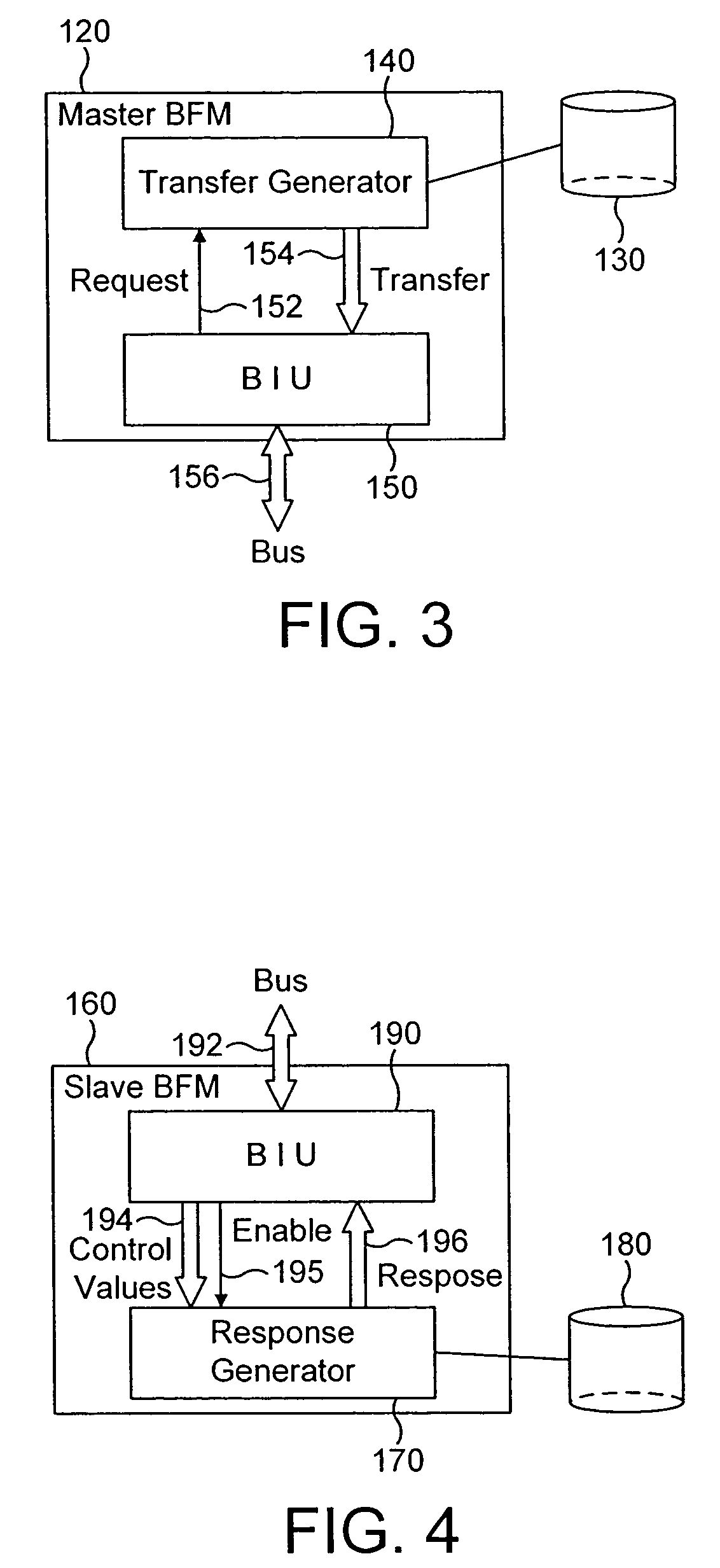Test component and method of operation thereof
a technology of test components and components, applied in the field of test components, can solve the problems of increasing the complexity of the system, the number of states in a given design at any time, and the clear cost of performing test procedures on the componen
- Summary
- Abstract
- Description
- Claims
- Application Information
AI Technical Summary
Benefits of technology
Problems solved by technology
Method used
Image
Examples
Embodiment Construction
[0070] Before discussing in detail the testing procedures of embodiments of the present invention, an example of the design of a data processing apparatus for which these testing procedures can be utilised will be discussed with reference to FIG. 1.
[0071] FIG. 1 illustrates the design 10 of a data processing apparatus taking the form of a microcontroller chip or System on Chip (SoC), which may be used within a device such as a personal organiser, a mobile phone, a television set top box etc. The SoC design 10 of FIG. 1 has a plurality of components 20, 30, 40, 60, 70 and 80 that are interconnected by an arrangement of buses. The actual interconnection of these buses is specified within the interconnect block 50. The interconnect block 50 includes a bus matrix which provides for the interconnection of multiple bus masters and slaves within the SoC 10. Hence, each master device 20, 30, 40 may be connected to corresponding buses 25, 35, 45 respectively, whilst each slave device 60, 70,...
PUM
 Login to View More
Login to View More Abstract
Description
Claims
Application Information
 Login to View More
Login to View More - R&D
- Intellectual Property
- Life Sciences
- Materials
- Tech Scout
- Unparalleled Data Quality
- Higher Quality Content
- 60% Fewer Hallucinations
Browse by: Latest US Patents, China's latest patents, Technical Efficacy Thesaurus, Application Domain, Technology Topic, Popular Technical Reports.
© 2025 PatSnap. All rights reserved.Legal|Privacy policy|Modern Slavery Act Transparency Statement|Sitemap|About US| Contact US: help@patsnap.com



